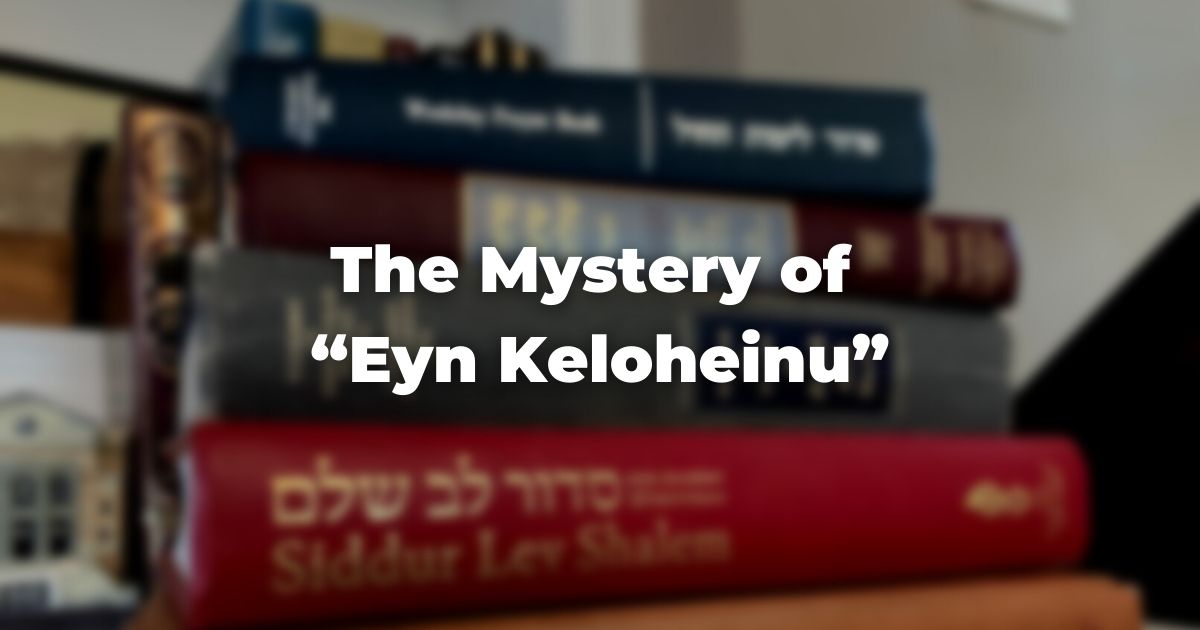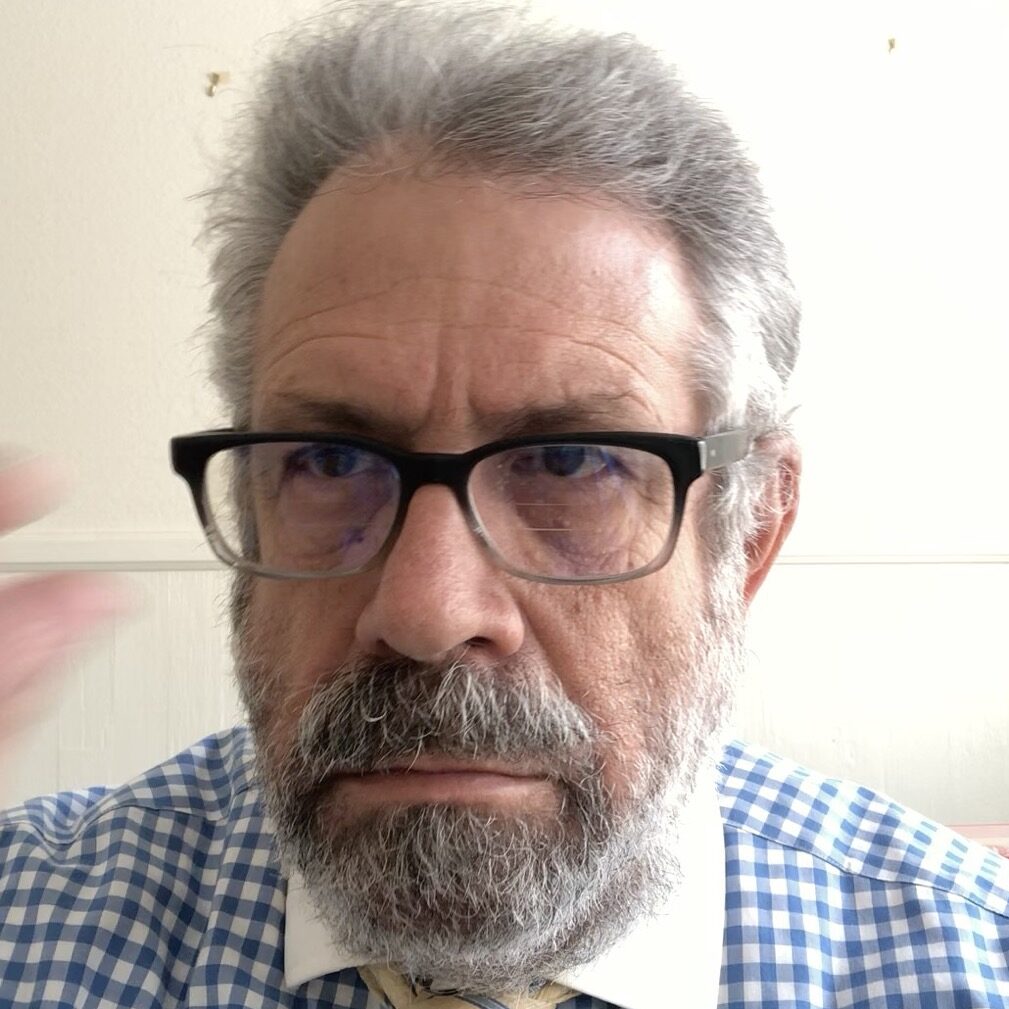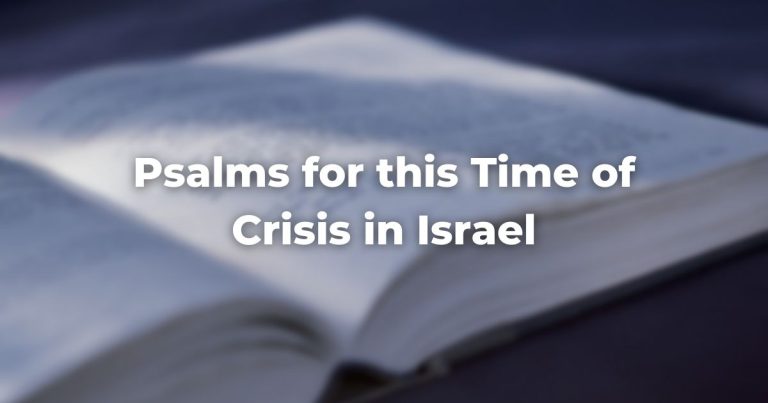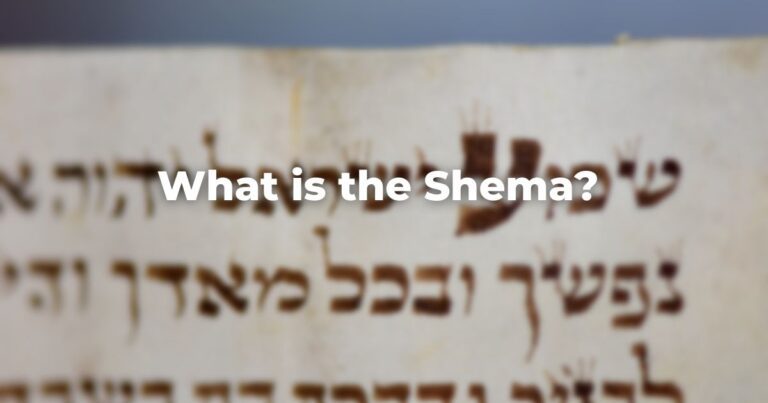I can’t even imagine how young I was when I first learned “Eyn Keloheinu.” It must have been one of the first “prayer songs” I learned as a very young child. Between the music, the words and the repetition, could there be anything simpler?
Growing up, it marked the final song of the Saturday morning service – either that or “Adon Olam.” Later on, when I moved to a more traditional style, it marked the beginning of the closing elements of the lengthy Shabbat morning prayers, “liturgical dessert,” if you will.
What could be simpler?
There is none like our God
There is none like our Lord.
There is none like our Sovereign,
There is none like our Savior.
Who is like our God?
Who is like our Lord?
Who is like our Sovereign?
Who is like our Savior?
Let us acknowledge/thank our God.
Let us acknowledge/thank our Lord.
Let us acknowledge/thank our Sovereign.
Let us acknowledge/thank our Savior.
Blessed are You our God.
Blessed are You our Lord.
Blessed are You our Sovereign.
Blessed are You our Savior.
You are our God.
You are our Lord.
You are our Sovereign.
You are are our Savior.
Eyn Keloheinu
Eyn Kadoneinu
Eyn K’malkeinu
Eyn K’moshiyeinu
Mi Kheloheinu
Mi Khadoneinu
Mi Kh’malkeinu
Mi Kh’moshiyeinu
Nodeh Lei’loheinu
Nodeh Ladoneinu
Nodeh L’malkeinu
Nodeh L’moshiyeinu
Barukh Eloheinu
Barukh Adoneinu
Barukh Malkeinu
Barukh Moshiyeinu
Ata hu Eloheinu
Ata hu Adoneinu
Ata hu Malkeinu
Ata hu Moshiyeinu
אֵין כֵּאלהֵינוּ.
אֵין כַּאדונֵינוּ.
אֵין כְּמַלְכֵּנוּ.
אֵין כְּמושִׁיעֵנוּ.
מִי כֵאלהֵינוּ.
מִי כַאדונֵינוּ.
מִי כְמַלְכֵּנוּ.
מִי כְמושִׁיעֵנוּ.
נודֶה לֵאלהֵינוּ.
נודֶה לַאדונֵינוּ.
נודֶה לְמַלְכֵּנוּ.
נודֶה לְמושִׁיעֵנוּ.
בָּרוּךְ אֱלהֵינוּ.
בָּרוּךְ אֲדונֵינוּ.
בָּרוּךְ מַלְכֵּנוּ.
בָּרוּךְ מושִׁיעֵנוּ.
אַתָּה הוּא אֱלהֵינוּ.
אַתָּה הוּא אֲדונֵינוּ.
אַתָּה הוּא מַלְכֵּנוּ.
אַתָּה הוּא מושִׁיעֵנוּ.
Simplicity itself, and yet, as I took a closer look, I realized for the first time – and after all these years – that there was a manifest contradiction in what I was singing!
If I had just stated there was none like our God, like our Lord, like our Sovereign, nor like our Savior, why was I following this with the question “Who is like our God, etc?”
Hadn’t I just stated quite emphatically, and in four different ways, “There is none like our God?” As I pondered what might be an answer to this puzzle, two different answers emerged.
Answer 1:
(Which I heard while a student in Rabbinical School from Professor, Dr. Jakob Petuchowski).
If we look at the first Hebrew letter of the first three stanzas of Eyn Keloheinu, we come up with א (aleph) in the first, מ (mem) in the second, and נ (nun) in the third. Together they spell out the word אמן (Amen); the word we use to affirm a blessing or a prayer that someone else has completed.
In the next two stanzas, the first starts with the word ברוך baruch (Blessed), and the second with the word אתה atah (You are).
At this point of the service, it’s as if we are saying “Amen” to indicate our affirmation to one another of our worship, and all those prayers that have been stated up to this point. It’s as if as through that word of affirmation, we are emphasizing that we’ve come to a point of conclusion.
And yet, we immediately follow this “Amen” with “Baruch atah” (Blessed are You) which is the way we begin many of our formal prayers. The word “Baruch” is actually quite difficult to translate into English. (Exactly what do we mean in referring to God as “blessed?”)
There are some who hold that its root meaning comes from the word brey’chah which means a spring or source. In this sense, we might be referring to God as “our Ultimate Source of all that exists.”
So in using this acrostic to suggest the words “Amen, Baruch Atah…” we are saying that, despite our major effort through the service we’ve just performed, we really haven’t come to a conclusion – really, just a beginning.
However, I remained somewhat dissatisfied with this answer. True, the author might legitimately take some liberties with the order of the stanzas to satisfy the important message of the acrostic. Nevertheless, I still felt that initial nagging contradiction.
Was there, possibly, a deeper point that Eyn Keloheinu was trying to make?
Answer 2:
True, sensing, believing and affirming, that behind all reality is One Divine Being that is the prime Source of all that exists is a major accomplishment.
However, it occurred to me, that while we might be able to state, without any doubt, that “there is nothing like our God;” just stating it doesn’t completely absolve us from mentally digging into what it might truly mean. In other words, we would still remain with the challenge of understanding just how significant such a proposition is.
One way of gaining a better sense of just how unique God is, would be to use our minds to look around us to see if there really is anything that can be compared to this Sovereign Lord of ours. Being able to conclude the truth of it, after fully examining our experience, makes that initial statement far more powerful. In fact, at such a point, we would be able to experience it with all our hearts and minds.
Being religious involves being in a dynamic state.
We are continually questioning ourselves; ridding ourselves of selfishness and falsehood; of entitlements, petty jealousies, and angers; attempting to recognize in every moment, to what degree we are the beneficiaries of a beneficent Power that lies above, beyond and at the heart of our very existence. This, even in the face of adversity and possibly on account of it!
Coming toward the end of major acts of worship, such as our Shabbat and Festival morning services, “Eyn Keloheinu” actually reminds us to see our religious perspective as the challenge that it is; to view our lives in a way that clarifies our place in relationship to that Divine Creator. It accomplishes this, by acknowledging
God’s Unique place beyond our limited view of reality through the words of Eyn Kelokeinu. In other words, by stating there is none like our God, our Lord, our Sovereign, and our Savior and following this with Mi Chadoneinu, “Who is like our God, our Lord, our Sovereign and our Savior.
And finally acknowledging that God is our ultimate Source of Blessing (Baruch Elokeinu) and accepting that Sovereignty through God’s Divine Presence (Atah Hu Elokeinu).
Note: It is also sometimes spelled Ein Keloheinu and the Hebrew text of the prayer swaps the letter kof ק for hey ה in order that the text won’t spell one of God’s names.
Author
-

Rabbi Mordecai Miller developed a love of Torah learning from a young age, and it has lasted a lifetime. He has studied the TaNaCH (the Hebrew Bible) through a variety of lenses from Biblical comics to Biblical commentators, midrashim, and other Rabbinic sources. He finds the Bible and its associated works a source of ever-evolving inspiration - a spiritual light to illumine our paths. Since ordination in 1974, Rabbi Miller has served congregations in St. Paul MN, Canton OH, St. Louis MO, and is currently serving at Congregation Beth Ami in Santa Rosa CA. Rabbi Miller is the son of Rabbi Meyer Miller and Israeli artist Shulamith Wittenberg Miller. He and his wife Susan are the proud parents of two Jewish professionals, their daughter Morat Derech Sarah Miller, and their son Rabbi Micah Miller, as well as two beautiful grandchildren. Rabbi Miller teaches a daily online class on the weekly Torah portion which can be accessed on YouTube.




